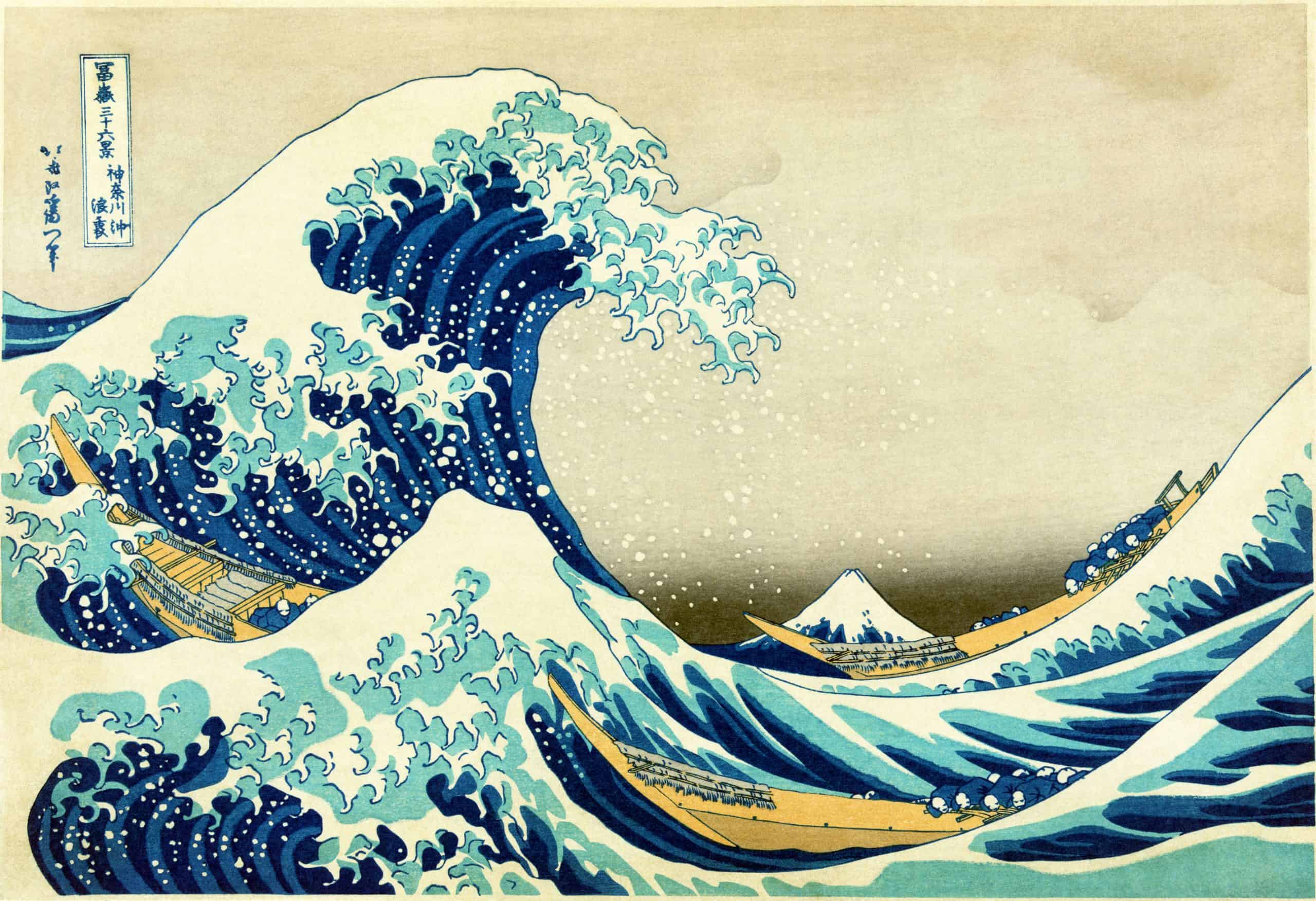Japanese woodblock prints can take art lovers to another time and place.
Ukiyo-e, as the art is known, flourished during Japan’s Edo period, from 1603 to 1868. Ukiyo-e was also accessible up and down Japan’s class hierarchy, and it’s still accessible to everyone today—even visitors, who can browse a famous collection or even buy a print to bring home. Here’s how to explore it, and fall in love with it.
Before you dive in, though, it’s important to understand ukiyo-e’s broader significance. Not only was it a revolutionary way of creating highly detailed and impactful visual depictions of Japanese life, but ukiyo-e was also the first type of art to be exported widely from Japan. It was particularly alluring to French painter Edgar Degas (1834–1917), who owned and studied several works. The prints opened a window to Japanese culture for the rest of the world, and also inspired Degas and his peers to rethink how they managed perspective and detail in their own pieces.
How ukiyo-e comes to life
Ukiyo-e translates loosely to “images of the floating world.” The art form was created in line with Buddhist concepts of life as constant transition: birth, struggle, death, and rebirth. But over the prosperous Edo period, ukiyo-e shifted to capturing life’s happier, more pleasurable moments — especially those involving sex, nature or both.
What’s so impressive about this style of art is not just what’s depicted, but how the images were made. The artists would carve their images into a wooden block, called a nishiki-e. The images had to be carved backwards, since the block then would have been used like a stamp to press ink onto washi paper, which is made of a few different types of native shrubs. Because several, brightly colored prints could be made from one nishiki-e, a single image could be reproduced hundreds or even thousands of times — hence the ultimate popularity and ubiquity of ukiyo-e works.
As ukiyo-e evolved, over time artists brought different ideas and subjects into their works — including the addition of brighter colors and more vivid detail. Especially impressive are the nature scenes, such as Katsushika Hokusai’s famous image (shown above) The Great Wave off Kanagawa. Equally renowned and valuable are images depicting flowers, landscapes, animals, or kabuki — but that’s only a fraction of the subjects and ideas explored in ukiyo-e.
Where to find ukiyo-e
It’s hard to avoid becoming quickly enamored with ukiyo-e—and you can take your newfound love of the art to any extreme your heart desires.
Start by exploring the vast collection of works at the Tokyo National Museum. Most works of ukiyo-e can be found in the main building, the Honkan Gallery, which houses the museum’s Japanese art. Another option is the Edo-Tokyo Museum, built specifically to shine a light on Japanese culture from the start of the Edo period to today. The permanent collection features an area called Aesthetics of Edo, where you can learn about ukiyo-e and its impact in Japan and abroad.
Private collections open to the public are also worth seeking out. In Tokyo there is the stunning and modern Sumida Hokusai Museum dedicated to the ukiyo-e artist who created the aforementioned Great Wave off Kanagawa, one of the world’s most recognized Japanese woodblock images. There’s also the impressive Ōta Memorial Museum of Art, which includes the 12,000 ukiyo-e pieces amassed by the late Seizō Ota V, former president of Tōhō Insurance Company. If you have time and an especially piqued interest, travel outside of Tokyo to Nagano to visit the Japan Ukiyo-E Museum, home to tens of thousands of prints by the leading lights of Japanese art. Depending on when you visit, there may be live, hands-on demonstrations of how to carve nishiki-e and use them to print.
Bring it home
Much like during the Edo period, ukiyo-e prints are available to any art lover.
At the Mita Arts gallery in Tokyo’s Jimbocho neighborhood, for example, you can find works from the mid-1700s for as little as 120,000 yen, or about $1,000 — and even an original work by the abovementioned Katsushika Hokusai, one of the most famous and celebrated ukiyo-e artists. But that one will cost you 9 million yen (around $82,000). Fortunately, there are hundreds of options in between to suit any sense of style — or wallet size.
That, at its core, is the beauty of ukiyo-e: There’s something for everyone who can find beauty in the depiction of everyday people, places and things. And that, of course, is the allure of Japanese culture in general.

